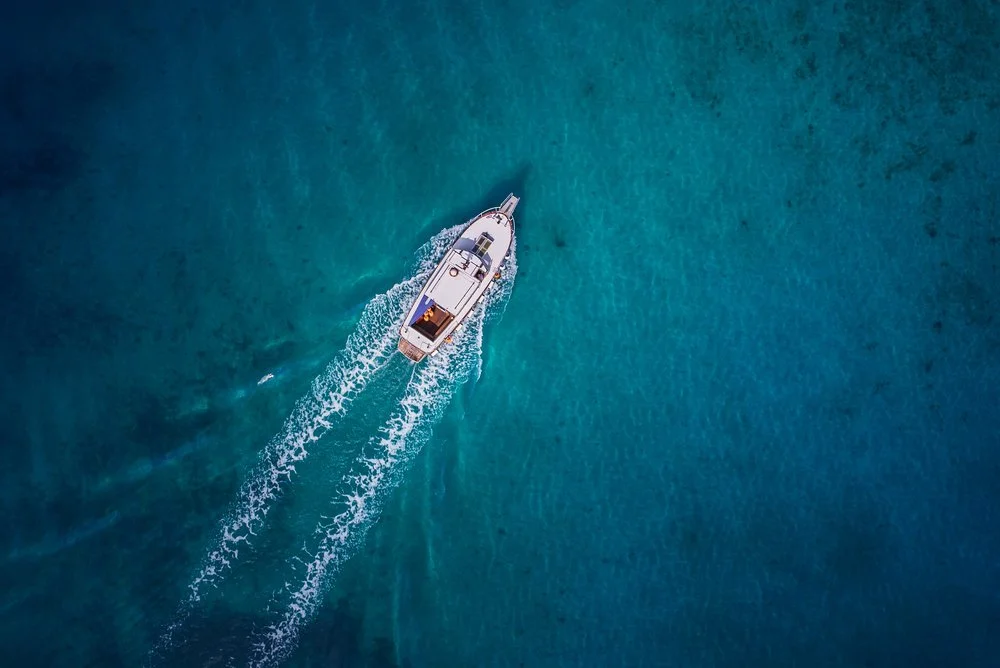Boating in the waters around Jax Boat Club is like a dream come true. There's something special about cruising along, feeling the sun on your face and the sea breeze in your hair. But as much as we love the water, we've got to respect it.
Understanding tidal changes and weather patterns is key to staying safe and making the most of your boating adventures. So, in this post, we're going to dive into the world of tides and weather, and give you the lowdown on how to navigate them like a pro. Let's get started!
Understanding Tidal Changes
Tides are like the ocean's rhythm. They're the rise and fall of sea levels caused by the gravitational pull of the moon and the sun. And the best part? They follow a predictable pattern, usually with two high tides and two low tides each day.
High Tide: This is when the water level is at its highest point. Think of it like the ocean taking a big breath in.
Low Tide: This is when the water level is at its lowest point. It's like the ocean exhaling.
Tidal Cycle: This is the complete cycle from one high tide to the next high tide. It usually takes about 12 hours and 25 minutes, which is a bit longer than a day.
Tides can have a big impact on your boating adventures. Here's why:
Water Depth: Tidal changes can cause the water level to rise and fall by several feet. This can affect your ability to navigate shallow areas and dock your boat.
Currents: Tidal currents can be strong and can affect your boat's speed and direction. Think of it like trying to swim in a river.
Safety: Knowing the tidal schedule can help you avoid getting stranded in shallow waters or running aground. Trust us, you don't want that to happen.
Before heading out on the water, it's essential to check the tidal schedule for the area. Here are a few ways to do it:
Tide Charts: These provide detailed information about high and low tides for specific locations and dates. You can usually find them at local marinas or online.
Tide Apps: There are tons of smartphone apps that provide real-time tidal information and forecasts. Some popular ones include Tides Near Me and Surfline.
Local Resources: Check with local marinas, boating clubs, or the Jax Boat Club for tide information and advice. Locals can give you the inside scoop on the best times to head out.
Weather Patterns in the Area
The weather in the Jacksonville area can be a bit unpredictable, but understanding common weather patterns can help you plan your boating trips more effectively.
Sunny Days: Jacksonville enjoys many sunny days, perfect for boating. Just don't forget your sunscreen, hat, and shades.
Rain and Thunderstorms: Summer afternoons often bring brief but intense thunderstorms. These storms can produce heavy rain, lightning, and strong winds, making boating dangerous. Keep an eye on the sky and be prepared to head back to shore if you see a storm brewing.
Windy Conditions: Wind can create choppy waters and make navigation more challenging. Pay attention to wind forecasts and adjust your plans accordingly. You might want to stick to more sheltered areas on windy days.
Checking the weather forecast before heading out on the water is crucial for a safe and enjoyable boating trip. Here are a few ways to do it:
Weather Apps: Use weather apps on your smartphone to get real-time weather updates and forecasts. Some popular ones include Dark Sky and Weather Underground.
Marine Weather Websites: Websites like NOAA (National Oceanic and Atmospheric Administration) provide detailed marine weather forecasts and alerts. They're a great resource for boaters.
Local News: Tune in to local news stations for weather updates and alerts. They can give you the latest scoop on what's happening in your area.
Tips for Safe Boating
Here are a few tips to help you stay safe and make the most of your boating adventures:
Plan Ahead: Always check the tides and weather forecast before heading out. Create a float plan and share it with a friend or family member, including your planned route and expected return time. And don't forget to pack essentials like life jackets, a first aid kit, sunscreen, water, and snacks.
Stay Informed: Keep an eye on the weather and be prepared to return to shore if conditions worsen. Use marine radios to get important weather updates and communicate with other boaters and emergency services.
Be Prepared for Emergencies: Know your boat's equipment and emergency procedures. Have an emergency kit on board, including flares, a whistle, a flashlight, and a multi-tool. And in case of an emergency, stay calm and follow your emergency plan.
Understanding tidal changes and weather patterns is key to a safe and enjoyable boating experience at Jax Boat Club. By checking the tides and weather forecast, planning ahead, and staying informed, you can navigate the waters with confidence and make the most of your time on the water. So why not start planning your next boating adventure today? Get ready to explore the beautiful waters around Jax Boat Club and create some unforgettable memories.

